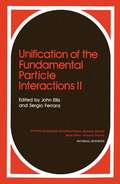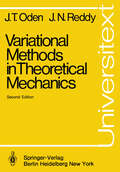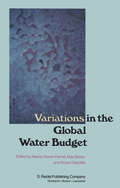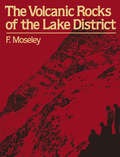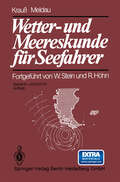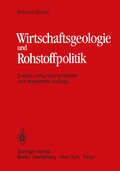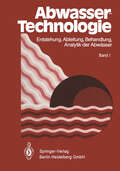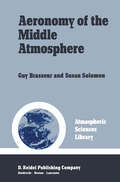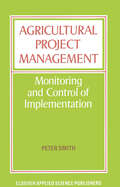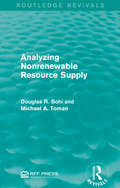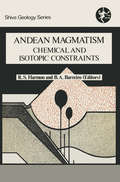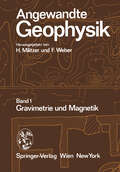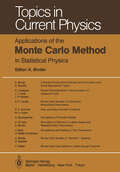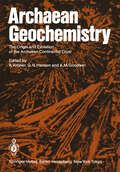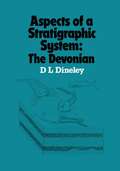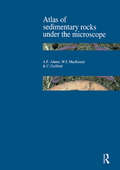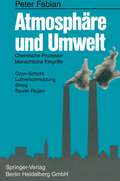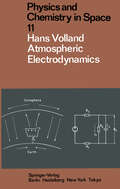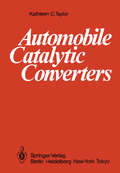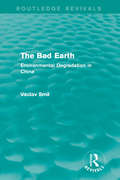- Table View
- List View
Unification of the Fundamental Particle Interactions II (Ettore Majorana International Science Series #15)
by John EllisWork on the unification of the fundamental particle interac tions has continued vigorously since the first Europhysics study Conference on this subject. At that time we emphasized the exis tence of two main approaches, one based on supersymmetry and pos sibly its local version, supergravity, and the other approach based on grand unified gauge theories. Discussion of the possible tests of these theoretical speculations included experiments on baryon decay and neutrino oscillations. In view of the uncertainties surrounding the observability of such phenomena, the early Universe was welcomed as a possible Laboratory for testing new theoretical ideas. At that time, we expressed the hope that the different gauge and super symmetry approaches would cross-fertilize each other" and it is appropriate to ask now how much of that hope has been realized. We believe there has recently been considerable theoretical rapprochement, which is amply reflected in these Proceedings. On the one hand it has been realized that many of the technical pro blems in grand unified gauge theories, such as arranging the hierarchy of different mass scales, may be alleviated using simple global supersymmetry. On the other hand there has been growing interest in the possibility that extended supergravity theories may furnish a suitable framework for the unification of all the fundamental particle interactions. Many physicists in fact now question actively whether the known "fundamental" particles are in deed elementary, or whether they are composite.
Variational Methods in Theoretical Mechanics (Universitext)
by J.T. Oden J.N. ReddyThis is a textbook written for use in a graduate-level course for students of mechanics and engineering science. It is designed to cover the essential features of modern variational methods and to demonstrate how a number of basic mathematical concepts can be used to produce a unified theory of variational mechanics. As prerequisite to using this text, we assume that the student is equipped with an introductory course in functional analysis at a level roughly equal to that covered, for example, in Kolmogorov and Fomin (Functional Analysis, Vol. I, Graylock, Rochester, 1957) and possibly a graduate-level course in continuum mechanics. Numerous references to supplementary material are listed throughout the book. We are indebted to Professor Jim Douglas of the University of Chicago, who read an earlier version of the manuscript and whose detailed suggestions were extremely helpful in preparing the final draft. We also gratefully acknowedge that much of our own research work on va ri at i ona 1 theory was supported by the U. S. Ai r Force Offi ce of Scientific Research. We are indebted to Mr. Ming-Goei Sheu for help in proofreading. Finally, we wish to express thanks to Mrs. Marilyn Gude for her excellent and painstaking job of typing the manuscript. This revised edition contains only minor revisions of the first. Some misprints and errors have been corrected, and some sections were deleted, which were felt to be out of date.
Variations in the Global Water Budget
by F. A. Street-Perrott Max Beran R. RatcliffR.E. Newell President, International Commission on Climate International Association of Meteorology and Atmospheric Physics Water is the active ingredient in the global climatic system, its physical properties ensuring that it plays a major role. Its high thermal capacity provides a mechanism for moderating mid latitude winter temperatures; solar energy is absorbed by the surface layers of the middle latitude oceans in summer and is released to the atmosphere in winter as the ocean cools. The variation of saturation vapour pressure with temperature is the factor which causes oceanic surface temperatures at low latitudes to be limited by evaporation to values near 29°C, thereby limiting tropical marine air temperatures to about the same value. The substantial amount of energy involved in phase changes - the latent heat - governs the passage of solar energy to the atmo sphere; visible solar radiation is absorbed at the Earth's surface, energy is supplied to evaporate water and the latent heat is released to the atmosphere when and where condensation occurs, which is often a considerable distance from the source of the moisture. The infrared radiative characteristics of water vapour, namely the broad vibration-rotation bands typical of a triatomic molecule, permit it to act as the principal agent of energy loss from the atmosphere, throu?,h infrared radiation to space.
Victims of the Environment: Loss from Natural Hazards in the United States, 1970–1980
by James D. Wright Peter H. Rossi Joseph A. Pereira Eleanor Weber-BurdinThe research reported in this volume was designed to provide estimates of the extent of damages and injuries from certain natu ral hazards inflicted on households in the United States. In addi tion, it reports on sources of aid proffered to households and the extent to which there are differences among households in the receipt of help. This volume represents the latest installment in a series of monographs stemming from the Social and Demographic Re search Institute's (SADRI) program of research on the effects of natural hazard events in the United States. The first volume in our series (Wright, Rossi, Wright, & Weber-Burdin, 1979) reported on the long-range effects of natural hazards on the population and housing stocks of neighborhoods and communities. The second volume (Rossi et aI. , 1982) assessed the support for hazard mitiga tion policies existing among local and state political elites in a sample of states and local communities in the United States. The main findings of these two monographs can be summarized as follows. First, long-range effects (up to 10 years postevent) of nat ural hazard events are minimal: Local communities and neighbor hoods that have been impacted by floods, tornadoes, or hurricanes appear to be no different in their population and housing growth patterns over the period 1960 to 1970 than comparable commu nities that went unscathed. Apparently, household and communi ty resources plus outside aid were sufficient ordinarily to restore impacted areas to normal growth patterns.
Wetter- und Meereskunde für Seefahrer
by Joseph Krauß Heinrich MeldauDie erste Auflage dieses Buches erschien im Jahre 1917 unter dem Titel "Krauß, Grundzüge der maritimen Meteorologie und Ozeanographie". Im Jahre 1931 erschien die zweite Auflage unter Mitarbeit von Professor Dr. Meldau, Seefahrtschule Bremen. An Stelle des 1937 verstorbenen Professor Dr. Meldau trat mit der dritten Auflage Dr. Walter Stein, Seefahrtschule Bremen, als Mitarbeiter ein. Die dritte Auflage erschien im Jahre 1952, eine vierte im Jahre 1958. Die fünfte Auflage wurde 1963 von Dr. Stein allein herausgegeben, nachdem Direktor Krauß im Jahre 1961 verstorben war. Mit Direktor Krauß verlor die deutsche Schiffahrt einen ihrer besten Lehrer und Erzieher. Es ist den Herausgebern ein tief verpflichtender Auftrag, dieses Buch, das dem Verstorbenen immer besonders am Herzen lag, in seinem Sinne und nach seinen Plänen weiterzuentwickeln. Dieses Buch, das seit der zweiten Auflage den Titel "Wetter-und Meeres kunde für Seefahrer" trägt, will in erster Linie eine Hilfe für den Unterricht in der Wetter-und Meereskunde an den Seefahrtschulen sein. Es kann aber auch dem Sportsegler und dem Seefischer Verständnis für die Vorgänge in der Luft und im Wasser vermitteln. Der für die Navigation verantwortliche Nautiker muß sich natürlich über den allgemeinen Rahmen dieses Buches weit hinausgehende Kenntnisse von den meteorologischen und hydrographischen Verhältnissen seines Fahrtgebietes erwerben. Dafür stehen ihm die einschlägigen Veröffentlichungen des Seewetteramtes und des Deutschen Hydrographischen Institutes in Hamburg zur Verfügung, deren genaues Studium für ihn unerläßlich ist. Für die fünfte Auflage wurde das Buch im wesentlichen unverändert gelassen.
Wirtschaftsgeologie und Rohstoffpolitik: Untersuchung, Erschließung, Bewertung, Verteilung und Nutzung mineralischer Rohstoffe
by W. GochtAbwassertechnologie: Entstehung, Ableitung, Behandlung, Analytik der Abwässer
by W. Czysz A. Denne H. Rump W. Schneider E. Staudte W. Supperl E. Blitz B. Böhnke P. Doetsch P. Dreschmann K. Pöppinghaus K. Siekmann S. ThomasDieses Handbuch deckt die gesamte Problematik der Abwassertechnologie ab: Abwasseranfall aus dem häuslichen und industriellen Bereich, direkte und indirekte Abwasserableitung, Abwasserbehandlung sowie der Gewässerschutz werden gemeinsam behandelt. Die umfassende Darstellung berücksichtigt nicht nur die Aspekte der Industrieländer, sondern vor allem die Probleme der Schwellen- und Entwicklungsländer. Die Auswahl der Information ist stark praxisorientiert. Das Buch liefert damit die Voraussetzung für eine fachlich abgestimmte Entwicklungspolitik auf dem Gebiet der Abwasserentsorgung und bietet Beratern, Ingenieurbüros und beteiligten Firmen eine Basis für die Diskussion, Planung und Realisierung konkreter Projekte. Es ist beabsichtigt, das Buch später auch in französischer und englischer Sprache zu publizieren.
Aeronomy of the Middle Atmosphere: Chemistry and Physics of the Stratosphere and Mesosphere (Atmospheric Sciences Library)
by Guy BrasseurThe reader may be surprised to learn that the word "aeronomy" is not found in many of the standard dictionaries of the English language (for exam ple. Webster's International dictionary). Yet the term would appear to exist, as evidenced by the affiliations of the two authors of this volume (Institut d'Aeronomie, Brussels, Belgium; Aeronomy Laboratory, National Oceanic and Atmospheric Administration, Boulder, CO, USA). Perhaps part of this obscu rity arises because aeronomy is a relatively new and evolving field of endeavor, with a history dating back no farther than about 1940. The Chambers dic tionary of science and technology provides the following definition: "aeronomy (Meteor. ). The branch of science dealing with the atmosphere of the Earth and the other planets with reference to their chemical com position, physical properties, relative motion,
Agricultural Project Management: Monitoring and Control of Implementation
by Peter SmithI first became interested in the methods of planning the sequence and timing of jobs on large-scale development projects, as a field officer involved in planning and implementing mechanised farming schemes in Uganda in the mid-sixties. This interest was reinforced by experience of agro-industrial projects in both Nigeria and Iran, when it became obvious that the lax traditional methods of both planning and controll ing the implementation of agricultural and other rural development projects were very ineffective compared with those already in use in other disciplines. An extended spell as Resident Adviser on a World Bank project to strengthen planning and project management services in the agricultural sector in Sind Province, Pakistan, stimulated this interest further, and gave opportunities to develop the use of improved methods on some very complex schemes. This book summarises the experience gained in adapting critical path methods, well established in other fields, to Third World development projects, with their peculiar problems. It would not have been possible to reach this point without the help and stimulation of discussions with a large number of colleagues, includ ing John Joyce (then of Hunting Technical Services), Hatsuya Azumi (World Bank), and-particularly-Zaffar Sohrwardy and Akhtar Ali of Aarkays Associates in Karachi, during our work together. My thanks are also due to Yasin Mohammed, who typed most of the original draft; Anwar Mohammed and Irene Mills for final typing; and to my wife, Jill, for drawing the original figures.
Analyzing Nonrenewable Resource Supply (Routledge Revivals)
by Douglas R. Bohi Michael A. TomanOriginally published in 1984, Douglas A. Bohi and Michael A. Toman have produced a convenient reference source about disparate elements in the theory of nonrenewable resource supply and about general issues that arise when applying dynamic economic analysis. The authors emphasise the inherently dynamic nature of resource supply decisions, the effects of resource depletion on costs and behaviour, and the influence of uncertainty about costs, prices, and reserves. This title will be useful to students interested in environmental studies and economics, practitioners, and others who need to know more about complex interactions of economic forces and the resource base.
Analyzing Nonrenewable Resource Supply (Routledge Revivals)
by Douglas R. Bohi Michael A. TomanOriginally published in 1984, Douglas A. Bohi and Michael A. Toman have produced a convenient reference source about disparate elements in the theory of nonrenewable resource supply and about general issues that arise when applying dynamic economic analysis. The authors emphasise the inherently dynamic nature of resource supply decisions, the effects of resource depletion on costs and behaviour, and the influence of uncertainty about costs, prices, and reserves. This title will be useful to students interested in environmental studies and economics, practitioners, and others who need to know more about complex interactions of economic forces and the resource base.
Andean Magmatism: Chemical and Isotopic Constraints
by HARMON/BARREIRODestructive plate margin magmagenesis is one of the most intensely studied and widely debated topics in the earth sciences at present. Calc-alkaline volcanic and plutonic rocks in orogenic settings exhibit such a diversity of composition and character that the subducted oceanic lithosphere, the overlying 'enriched' lithospheric mantle and the lower continental crust all have been advocated recently as the primary source region for island-arc and continental-margin basaltic to andesitic magmas. The role of the upper continental crust is also a matter of continuing controversy. It is clear that crustal contamination is a common, but not universal, feature of destructive plate margin magmatism. Whether this contamination is introduced at source by subduction-related processes or occurs during magma transit by bulk anatexis and magma mixing, selective contamination or coupled fractional crystallization-assimilation mechanisms is central to most current discussions of andesite petrogenesis. This book presents a series of papers which directly address these and other important geological and geochemical problems within the context of the Mesozoic-Cenozoic calc-alkaline magmatism characteristic of the Andean Cordillera of western South America. Although it is aimed primarily at postgraduate students and researchers familiar with the Andes, it is also a useful general reference for workers in other fields who wish to gain an insight into current thoughts, ideas and speculations on 'andesitic' magmatism at destructive plate margins.
Applications of the Monte Carlo Method in Statistical Physics (Topics in Current Physics #36)
by A. Baumgärtner K. Binder J. P. Hansen M. H. Kalos K. Kehr D. P. Landau D. Levesque H. Müller-Krumbhaar C. Rebbi Y. Saito K. Schmidt D. Stauffer J. J. WeisMonte Carlo computer simulations are now a standard tool in scientific fields such as condensed-matter physics, including surface-physics and applied-physics problems (metallurgy, diffusion, and segregation, etc. ), chemical physics, including studies of solutions, chemical reactions, polymer statistics, etc. , and field theory. With the increasing ability of this method to deal with quantum-mechanical problems such as quantum spin systems or many-fermion problems, it will become useful for other questions in the fields of elementary-particle and nuclear physics as well. The large number of recent publications dealing either with applications or further development of some aspects of this method is a clear indication that the scientific community has realized the power and versatility of Monte Carlo simula tions, as well as of related simulation techniques such as "molecular dynamics" and "Langevin dynamics," which are only briefly mentioned in the present book. With the increasing availability of recent very-high-speed general-purpose computers, many problems become tractable which have so far escaped satisfactory treatment due to prac tical limitations (too small systems had to be chosen, or too short averaging times had to be used). While this approach is admittedly rather expensive, two cheaper alternatives have become available, too: (i) array or vector processors specifical ly suited for wide classes of simulation purposes; (ii) special purpose processors, which are built for a more specific class of problems or, in the extreme case, for the simulation of one single model system.
Applied High-Resolution Geophysical Methods: Offshore Geoengineering Hazards
by P.K. TrabantThe discipline encompassing the use of high-resolution geophysics for obtaining geoengineering survey data has evolved rapidly over the past decades to become an interdisciplinary subject encompassing the fields of Geophysics, engineering, geology, marine geology, oceanography, and civil engineering. While high-resolution geophysical surveys are routinely performed offshore today, this has been so only since the late 1960s. High-resolution geophysical methods are employed in the offshore environment to obtain a comprehensive picture of the sea-floor mor phology and underlying shallow stratigraphy. The purpose of the survey methods is to assist in the design and installation of bottom-supported structures such as drilling and production platforms and pipelines. Drilling structures and pipelines of steel and/or concrete have become behemoths with respect to their size and the complexity of their design in order to withstand, for periods of up to twenty-five years, an extremely harsh environment, including storm waves, strong currents, unstable sea floor conditions, and great water depths. It is therefore of paramount importance that the geometry and physical properties of the sea floor be well understood in order to provide an adequate foundation for the design lives of such structures. On land, engineering foundation data usually may be obtained by visual field inspection and shallow borehole information, but offshore the presence of the water column places certain constraints on geoengineering investigations. High-resolution geophysical methods employed in the acquisition of geoengineering data offshore are defined as the use of seismic sources and receivers that operate at acoustic frequencies greater than 100 Hz.
Archaean Geochemistry: The Origin and Evolution of the Archaean Continental Crust
by A. Kröner, G. N. Hanson and A. M. GoodwinArchaean Geochemistry 1972 - 1984 The realisation that the continental crust contains well-preserved relics which date as far back as 4/5 of the Earth's age has given a great impetus to the study of early Precambrian terrains. As late as the mid-sixties the Archaean still constituted the 'terra-in cognita' of earth science. High metamorphic grades, poor out crop, and not least a widely assumed obliteration of early crustal records by convective recycling and thermal reworking had com bined to discourage research in this field. Many excellent local studies existed, notably around gold mining centres, but remained unrelated to a broader regional and theoretical understanding. This situation has changed as the consequence of two inter-related factors: (1) advances in isotopic methods and their application to Precambrian rocks, and (2) the recognition that some of the oldest terrains have retained a wealth of primary igneous and sedi mentary textures and even geochemical characteristics.
Atlas of Sedimentary Rocks Under the Microscope
by A. E. Adams W. S. Mackenzie C. GuilfordProvides a very clear guide to sedimentary rock types as seen under the microscope supported by practical aspects of slide preparation.
Atlas of Sedimentary Rocks Under the Microscope
by A. E. Adams W. S. Mackenzie C. GuilfordProvides a very clear guide to sedimentary rock types as seen under the microscope supported by practical aspects of slide preparation.
Atmosphäre und Umwelt: Chemische Prozesse, Menschliche Eingriffe. Ozon-Schicht, Luftverschmutzung, Smog, Saurer Regen
by Peter FabianAtmospheric Electrodynamics (Physics and Chemistry in Space #11)
by H. VollandThis book resulted from lectures which I gave at the Universities of Kyoto, Cologne, and Bonn. Its objective is to summarize in a unifying way two other wise rather separately treated subjects of atmospheric electrodynamics: elec tric fields of atmospheric origin, in particular thunderstorm phenomena and related problems on the one hand, and magnetic fields, in particular those which are associated with electric currents of upper atmospheric origin, on the other. Geoelectricity and geomagnetism were not always considered as be longing to quite different fields of geophysics. On the contrary, they were re cognized by the physicists of the 19th and the beginning of the 20th century as two manifestations of one and the same physical phenomenon, which we pre sently refer to as electromagnetic fields. This can still be visualized from the choice of names of scientific journals. For instance, there still exists the Japanese Journal of Geomagnetism and Geoelectricity, and the former name of the present American Journal of Geophysical Research was Terrestrial Magnetism and Atmospheric Electricity. Whereas geomagnetism became the root of modern magnetospheric phys ics culminating in the space age exploration of the earth's environment, geo electricity evolved as a step-child of meteorology. The reason for this is clear. The atmospheric electric field observed on the ground reflects merely the local weather with all its frustrating unpredictability. The variable part of the geomagnetic field, however, is a useful indicator of ionospheric and magneto spheric electric current systems.
Automobile Catalytic Converters
by Kathleen C. TaylorThe use of catalytic converters for the purification of automotive exhaust gases is a relatively new technology which was brought into existence by social pressures for the preservation of acceptable environmental conditions. The majority of catalytic practitioners have been able to watch the growth of this technology from its inception to its current state of sophistication. Automotive catalytic converter technology is now in a mature state, and this chapter from Vol. 5 Catalysis: Science and Technology by Dr. K. C. Taylor provides a review which covers both the process chemistry and the most important converter design factors. Contents 1. Introduction. . . . . . . . . . . . . . 2. Emission Regulations in the United States. 3. Exhaust Emission Characteristics. . 3 4. 1981 Emission Control Technology. 5 A. Converters. . . 5 B. Control System. 7 8 ~. Catalyst Screening . 6. Laboratory Testing. .10 7. The Chemical Reactions 13 8. Composition of Three-Way Catalysts. 16 A. Rhodium 17 21 B. Platinum. C. Palladium 22 D. Iridium . 22 23 E. Ruthenium and Nickel. F. Cerium Oxide ..... 23 G. Search for Alternatives to Nohle Metals 24 9. Catalyst Supports . 25 A. Pellets .... 26 B. Monoliths . . 26 10. The Transient Behavior of Three-Way Catalysts 27 II. Deterioration of Three-Way Catalysts. 35 A. Thermal Effects. . . . 35 B. Phosphorus Poisoning. . . 37 C. Lead Poisoning. . . . . . · 38 D. Catalyst Poisoning by Sulfur · 40 12. The 0.4 NO,; Research Objective. · 41 13. Control of Diesel Particulate Emissions.
The Bad Earth: Environmental Degradation in China (Routledge Revivals)
by Vaclav SmilAs China strives to significantly increase its economic output, the nation faces an acute deterioration of the physical resources from which this prodigious growth springs. Major problems include water shortages, the pollution of water, high levels of carcinogens in the air, accelerating erosion, and industrial pollution. Originally published in 1984, Vaclav Smil documents and evaluates China’s environmental crisis. This title will be of particular interest for students of Environmental Studies and Development Studies.
The Bad Earth: Environmental Degradation in China (Routledge Revivals)
by Vaclav SmilAs China strives to significantly increase its economic output, the nation faces an acute deterioration of the physical resources from which this prodigious growth springs. Major problems include water shortages, the pollution of water, high levels of carcinogens in the air, accelerating erosion, and industrial pollution. Originally published in 1984, Vaclav Smil documents and evaluates China’s environmental crisis. This title will be of particular interest for students of Environmental Studies and Development Studies.
